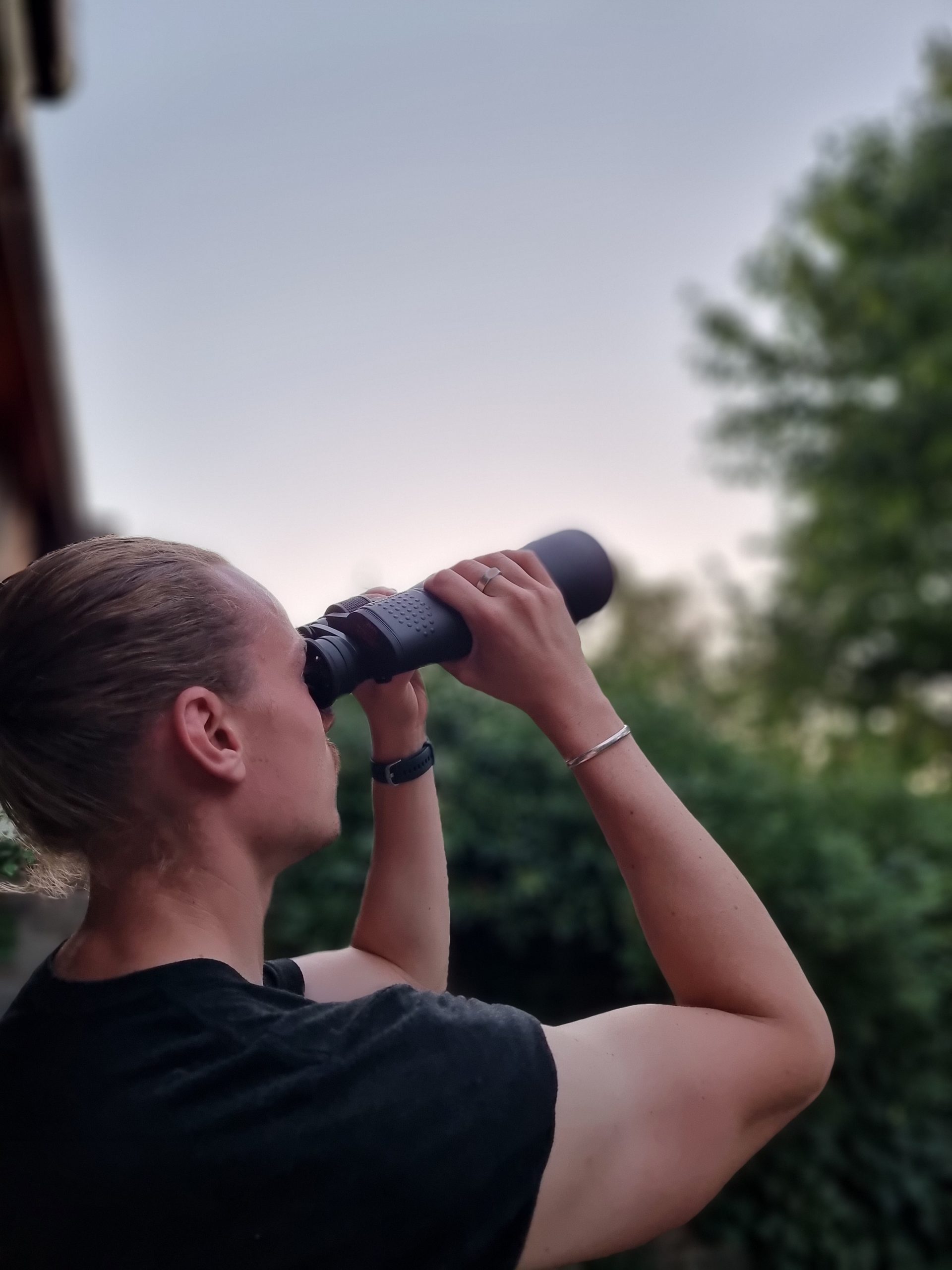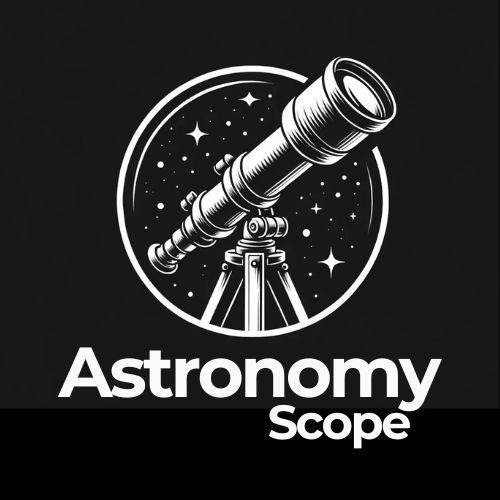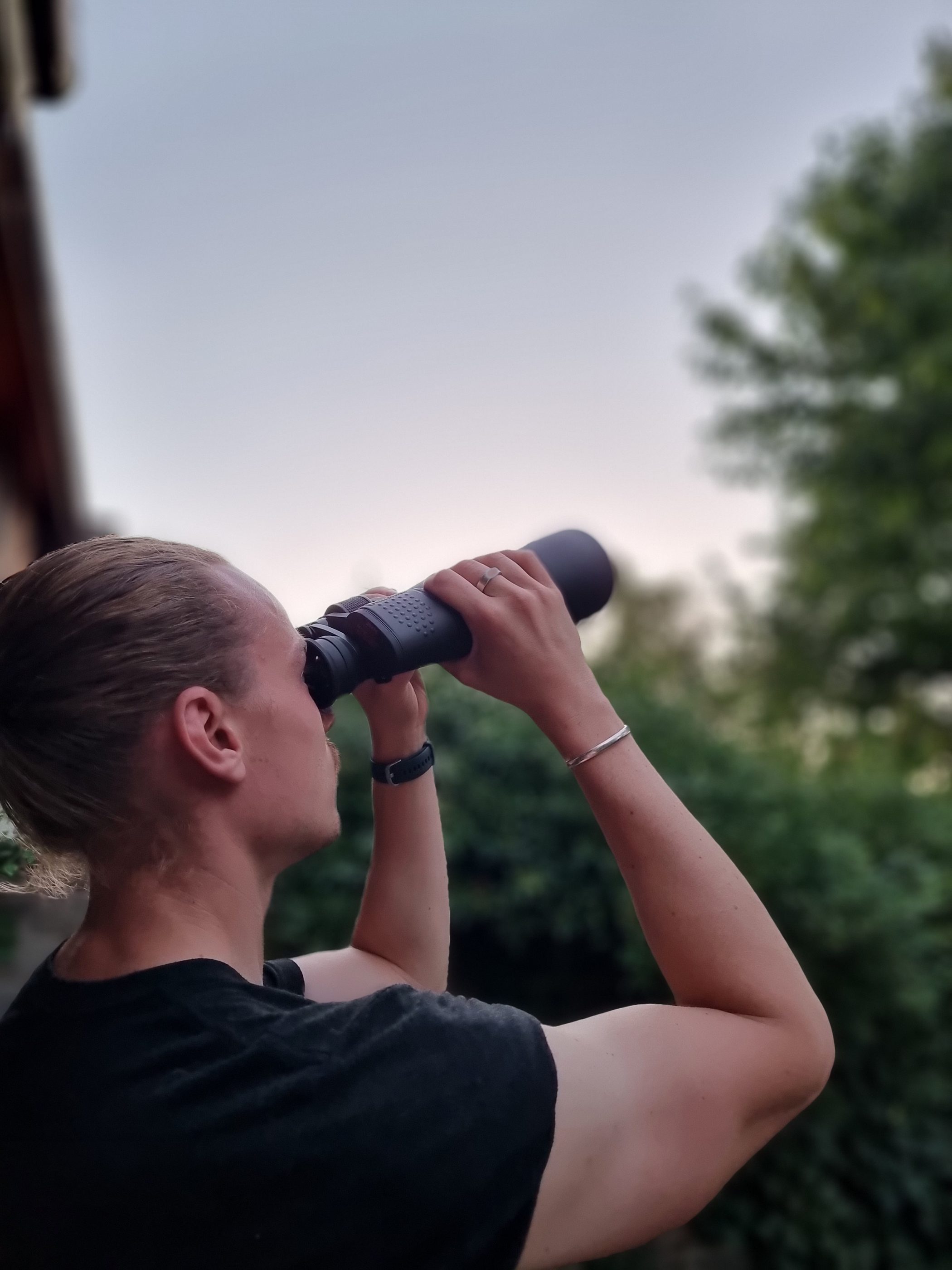The Celestron Nexstar telescopes are pretty popular among those interested in star gazing. There are many different models available, but it’s essential to understand their differences and similarities.
So, when it comes to Celestron Nexstar 127 SLT vs. 130 SLT, what make them different and which one should you go for? This guide will dive into everything you need to know to discern which model is best for your needs.
Quick Comparison & Verdict




Celestron Nexstar 127 SLT vs. 130 SLT: Key Differences
Aperture
It’s evident that there’s a stark difference in the aperture capabilities in each telescope.
While the 127 SLT offers an aperture of 127mm/5″, the 130 SLT delivers 130mm/5.1″.
It may not look like much of a difference when you compare the two, but the 130 SLT will definitely be able to gather more light in comparison.
The reason many astronomy enthusiasts would prefer a higher aperture is that it’s a core component of providing a clear and detailed view.
This isn’t to say that the 127 SLT isn’t sufficient in many cases; it just comes down to what you’re looking for in the night sky.
Both are more than effective for many people, but the 130 SLT would be the best choice regarding aperture if you’re looking for a refined image.
Focal Ratio
With telescopes (and cameras), the focal ratio is based on dividing the focal length by the aperture. It has a direct correlation to a telescope’s magnification, which is one of the biggest selling points to most shoppers.
The 127 SLT has a focal ratio of f/11.8, and the 130 SLT comes with f/5.
For more clarification, you can get between 60x and 167x magnification with the 127 SLT, depending on the eyepiece you use.
If you need more magnification than that, the 130 SLT is capable of up to 260x magnification.
Based on the types of celestial objects you’re hoping to see in clear detail, you’ll want to consider the magnification limits of each telescope.
Focal Length
The 130 SLT telescope offers a wider focal length with a focal length of 650mm.
This allows you to see more of the night sky at once, in comparison to the 127 SLT’s 1,500mm focal length.
You’ll find that both offer a decent viewing experience, but this is another where the 130 SLT takes the cake.
The focal length is what determines a telescope’s angular field of view, and the shorter the focal length, the wider FOV you can enjoy.
There’s no question that the 127 SLT is more than satisfactory for many people, but if you’re looking for an all-encompassing view, the 130 SLT is the better option.
Price
Aside from their features, most people make their final decision based on the price tag.
How much they cost is bound to vary depending on where you make the purchase, but if you look at the major retailers of these telescopes, you’ll notice the costs aren’t all that different.
There’s typically only $50 or so in it.
So regardless of which one you go with, you can expect a similar cost.
You can save a little money by going with the 130 SLT, but considering they’re pretty close in price, most buyers will be more concerned with the features they provide.
When it comes to purchasing. I have found that the best prices can be found on Amazon. It also appears that when it comes to cost, you’ll find that many buyers feel both these telescopes are entirely worth the money in the long run.
Celestron Nexstar 127 SLT vs. 130 SLT: Key Similarities
Computerized Telescope
Both the 127 and 130 SLT come with computerized AltAzimuth mounts with a single fork arm.
This makes it easy to track celestial objects in the night sky, and the mount is assembled on the adjustable steel tripod.
There’s also a computerized hand control included, which gives users instant access to 40,000 trackable celestial objects.
Each comes equipped with the NexStar+ database, which is guaranteed to provide endless amazement as you can search for thousands of objects in outer space all year long.
With 600 galaxies, 300 clusters, and a seemingly endless list of stars, you’ll never run out of celestial objects to track.
If you feel overwhelmed or aren’t sure what to look for, the telescopes also offer a Sky Tour feature that will help you choose what to track.
This feature’s suggestions will also be catered to what’s visible based on your specific time and location.
Power
Although the telescopes may seem fairly convoluted and technical, it doesn’t take much power to keep them up and running.
Each can operate off of 8 AA batteries, or you can use a 12V AC adapter to provide the power they need.
It’s also important to note that the internal battery compartment is what delivers power to the servo motors.
This helps to maintain rigid low-vibration performance, in addition to eliminating cord wrapping issues that are common with external battery packs.
Neither telescope requires an immense amount of power to get up and running. However, you will have to keep AA batteries on hand to ensure you don’t encounter any downtime.
SkyAlign Technology
One of the biggest benefits of these Celestron telescopes is the SkyAlign technology that comes built into them.
This proprietary alignment technology makes setting up and utilizing the computerized features a breeze.
When you point the telescope at three bright points in the night sky, this technology will be able to triangulate its position and automatically locate any other celestial object in the sky.
It helps to take the manual work off of using telescopes, and Celestron offers plenty of educational material to help you get started with the SkyAlign tech.
Who Is The Celestron Nexstar 127 SLT Best For?
It’s evident that each telescope comes with a few similarities, but to find out which Celestron model is best for you, it’s a good idea to base this on their differences.
If you aren’t necessarily looking to observe deep-space objects, the 127 SLT is the better choice. It has everything you need to view nearby celestial objects with decent clarity.
The 130 SLT offers a tad more regarding clarity and magnification, but this may not be needed for what you’re trying to accomplish.
If you feel that 60x up to 167x magnification is more than enough, then the 127 SLT is a great choice.
I’d say this telescope is optimal for individuals who are somewhat new to the technology, as it offers a great introduction to telescopes on multiple fronts.
I don’t want to make it seem like the 127 SLT is simplistic by any means, as it’s capable of quite a lot and shares many of the same features that are found in the 130 SLT.
However, the key differences that are present may make or break your decision to make a purchase.
There’s plenty to appreciate about the 127 SLT, and it will easily impress any astronomy enthusiast who is looking for their first telescope.
Although, after you’ve had an ample amount of time with the telescope, you may be looking for an upgrade.
This is where the 130 SLT would come in, as its wider FOV and higher magnification can provide a very different viewing experience.
Considering they’re relatively close in price, this won’t be as much of a determining factor compared to the individual features and specifications.
Overall, the 127 SLT is an excellent purchase for all kinds of astronomy lovers, but its limitations should be understood before rushing into making a purchase.
- COMPUTERIZED STAR LOCATING TELESCOPE: The Celestron NexStar 127SLT offers a database of more than 40,000 stars, galaxies, nebulae, and more. Simply choose an object and the telescope finds it for you in the night sky and tracks it as it moves.
- MAKSUTOV-CASSEGRAIN OPTICAL DESIGN: With a large, 127mm aperture, the NexStar 127SLT can gather enough light to see our Solar System and beyond. View Saturn’s rings, Jupiter’s cloud bands, the Moon's craters, and the Orion Nebula in brilliant detail.
- COMPACT AND PORTABLE: The ideal telescope for adults and kids to use together, the NexStar 127SLT is compact, lightweight, and portable. It's easy to transport just about anywhere—your favorite campsite, a dark sky observing site, or simply the backyard.
- FAST SETUP WITH SKYALIGN: Celestron’s proprietary SkyAlign procedure has you ready to observe in minutes. Center any 3 bright objects in the eyepiece and the NexStar SLT aligns to the night sky, ready to locate thousands of objects.
- UNBEATABLE WARRANTY & SUPPORT: Buy with confidence from Celestron, a leading telescope brand in California since 1960. Your purchase includes a 2-Year US Warranty and unlimited support from our team of US-based experts.
Who Is The Celestron Nexstar 130 SLT Best For?
If you’re looking for a bit of an upgrade in your viewing experience, the 130 SLT comes with a few advantages that aren’t found in the 127 SLT.
With a maximum magnification of 260x, you can see many deep-space objects with an impressive amount of clarity. The detailed view this telescope provides is heavily influenced by its aperture.
Although you can easily view many nearby objects, this telescope caters to those who are looking for more distant objects in the night sky. Those who are looking for a wider focal length would benefit from the 130 SLT as well.
Surprisingly, the 130 SLT is also the more cost-efficient option, as it’s often a tad cheaper than the 127 SLT.
Among the various specific differences between the two telescopes, it seems the 130 SLT is the best option for deep-space objects.
The combination of its magnification capabilities and the field of view and overall clarity offers a viewing experience many people would love.
You can’t go wrong considering the price point, as many other telescopes on the market can easily be much more expensive.
On top of that, you get the reliability and quality of a Celestron Nexstar telescope, which is highly favored within the astronomy community.
Both telescopes offer many of the same features, but it looks like the 130 SLT is a top choice for many of the reasons stated in this guide.
- COMPUTERIZED STAR LOCATING TELESCOPE: The Celestron NexStar 130SLT offers a database of more than 40,000 stars, galaxies, nebulae, and more. Simply choose an object and the telescope finds it for you in the night sky and tracks it as it moves.
- NEWTONIAN REFLECTOR OPTICAL DESIGN: With a large, 130mm aperture, the NexStar 130SLT can gather enough light to see our Solar System and beyond. View Saturn’s rings, Jupiter’s cloud bands, the Moon's craters, and the Orion Nebula in brilliant detail.
- COMPACT AND PORTABLE: The ideal telescope for adults and kids to use together, the NexStar 130SLT is compact, lightweight, and portable. It's easy to transport just about anywhere—your favorite campsite, a dark sky observing site, or simply the backyard.
- FAST SETUP WITH SKYALIGN: Celestron’s proprietary SkyAlign procedure has you ready to observe in minutes. Center any 3 bright objects in the eyepiece and the NexStar SLT aligns to the night sky, ready to locate thousands of objects.
- UNBEATABLE WARRANTY & SUPPORT: Buy with confidence from Celestron, a leading telescope brand in California since 1960. Purchasing from an Authorized Dealer on Amazon gives you a 2-Year US Warranty and unlimited support from our team of US-based experts.

Hey, my name is Jeremy. I’m a passionate and seasoned astronomer who loves nothing more than observing the night sky. I also love researching, learning, and writing all things Space and the Universe. I created Astronomy Scope to share my knowledge, experience, suggestions, and recommendations of what I have learned along the way while helping anyone to get into and maximize their enjoyment of the hobby.

